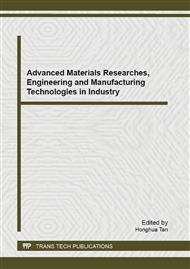p.81
p.88
p.94
p.99
p.106
p.111
p.118
p.122
p.127
Wood-Based Panels’ Properties when Subject to Temperature and Humidity Variation
Abstract:
In order to reveal impact of environment humidity and temperature on properties of indoor decorated materials, the paper tested physical and mechanical prosperities of 5 kinds of wood-based panels according to European standards after equilibrium treatments in 3 types of atmosphere. The results showed that the tested materials were very hydrophilic and their strength were closely related to moisture content. Internal bond, modulus of rupture, 24h-thickness swelling and surface soundness of wood-based panels decreased at high temperature and high humidity atmosphere and increased in low temperature and low humidity surroundings, and the decrement are greater than the increment. In contrast, density almost kept the same value during these treatments.
Info:
Periodical:
Pages:
106-110
Citation:
Online since:
September 2013
Authors:
Price:
Сopyright:
© 2013 Trans Tech Publications Ltd. All Rights Reserved
Share:
Citation:


